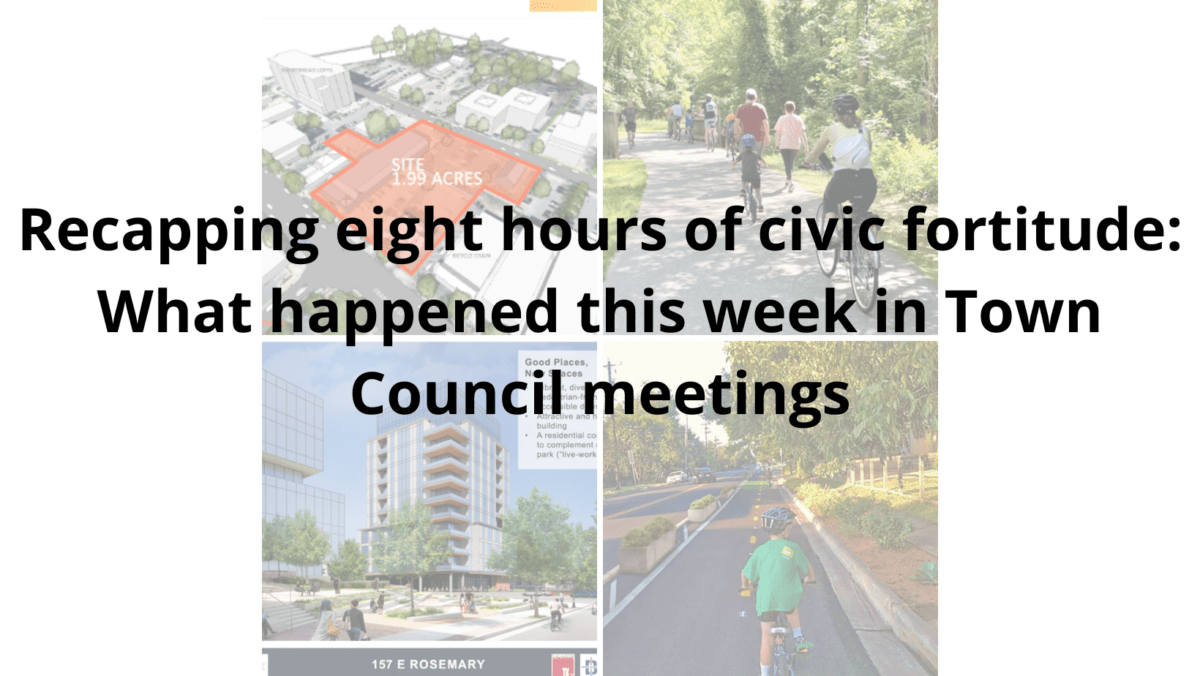The Town Councils in Carrboro and Chapel Hill met on Wednesday night for a combined eight hours and change. During that time, Henry Kissinger died and the UNC basketball team scored 100 points. We don’t know for sure whether any of that was related. (Confidential to Bojangles: We think anything over 4 hours in town council chambers also deserves biscuits.)
But during those overlapping eight hours of civic fortitude, a lot went down. Some highlights:
A street in Carrboro will be named for Braxton Foushee
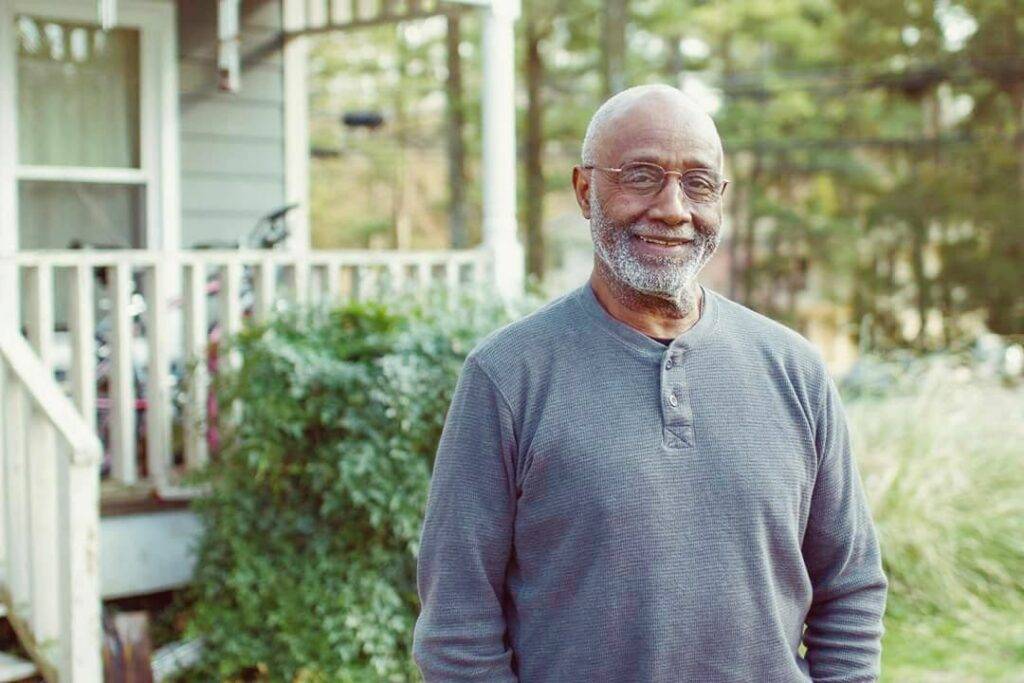
Carrboro Town Council asked staff to begin the process of street renaming for Foushee and to notify residents and property owners on Carr Street, which was named for the white supremacist Julian Carr (who is also the namesake of Carrboro.)
We could not think of a better or more apt renaming. Much was said about Foushee last night from a variety of community members about his long-standing commitment to advancing civil rights and Carrboro: He’s a central figure in Chapel Hill and Carrboro’s civil rights movement, currently serves on the Planning Board, became Carrboro’s first Black alderman in 1969, is a key figure in obtaining (and expanding) bus service in Carrboro, and fought tirelessly, for decades, to extend water and sewage service to the Rogers Road community.
He also is majorly responsible for getting bus service in Carrboro and keeping our free bus service around. It’s way too long to detail here, so we have an entirely separate piece on Foushee’s contributions to our public transit system.
Carrboro voted to add Bolin Creek phases 3 and 4 to a call for regional flexible funding
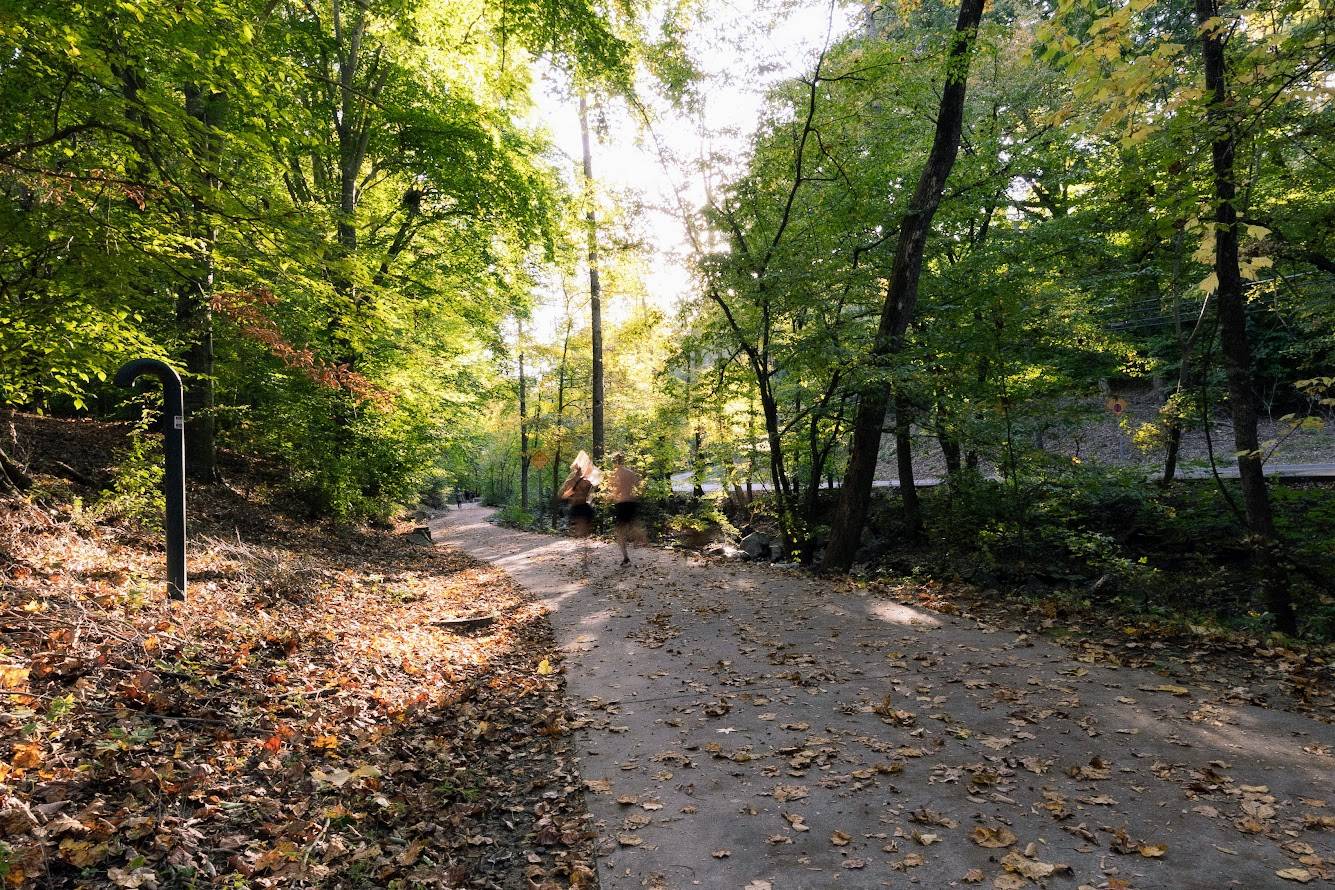
This is a little wonky, but here goes: every few years, the regional transportation planning organization (Durham-Chapel Hill-Carrboro Metropolitan Planning Organization) distributes a bucket of money to bike and pedestrian infrastructure projects in Durham, Chapel Hill, and Carrboro.
There are a bunch of projects in Carrboro that are good candidates for funding. But these projects compete against each other and also the projects that Durham and Chapel Hill submit. There were a few “packaged” options for Carrboro to consider submitting this time around, including one that included everything. And Carrboro decided to submit that one – so every project from Carrboro will be in the potential funding pool.
We’re thrilled that they’ve added Bolin Creek Greenway Phases 3 and 4 to the pool. And it makes sense to do so. Chapel Hill submitted their extension of Bolin Creek Greenway from Umstead Park to Estes – and Carrboro is now submitting their Bolin Creek Greenway from Estes onward. If both parts are funded through this mechanism, we’ll have an extensive greenway network connecting across both towns. (Vote was 6-1, with Haven-O’Donnell voting no.) Hooray!
Carrboro adopted the Race & Equity Action Plan (REAP), Weaving Equity in Carrboro Town Governance
The board unanimously adopted REAP, a blueprint that outlines the work that’s already been doing and will be done in town governance.
Before the plan was adopted, Dr. Michelle Laws asked the board to revise the description of Carrboro’s history to note that the town was largely built on the labor of Blacks and poor whites. (Her comments are worth watching in full. They’re quite good.) The board agreed to modify the history to acknowledge this.
We’re particularly looking forward to the work in the coming year that will research and advocate for Bill H.R. 40 (117th – Establish a Commission to Study and Develop Reparations Proposals for African Americans Act.)
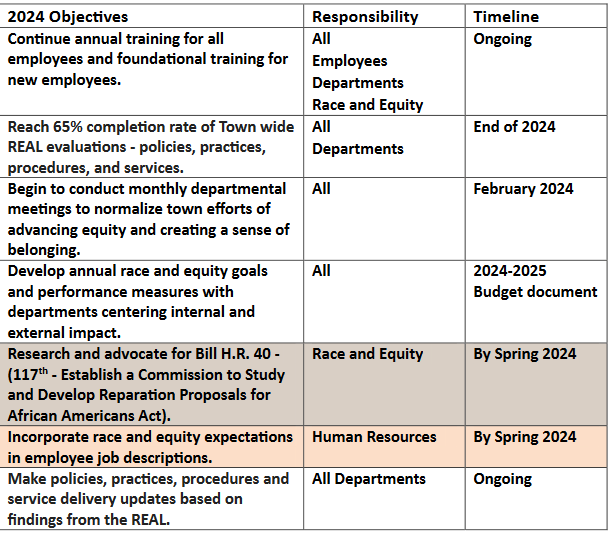
Over in Chapel Hill…
Council voted to establish a game-changing revolving affordable housing fund
It starts with a $5 million contribution from UNC Health and will be run by Self-Help. This is really, really good news. It will allow the town to be strategic in its approach to affordable housing. There are two fund products: short-term revolving bridge loans to help acquire or maintain naturally occurring affordable housing and subsidized housing reaching the end of their affordability period. (What this means: the town will be able to step in and help save buildings that might otherwise become luxury apartments or McMansions.) Also, there’s low-interest permanent financing to support affordable housing to ensure long-term affordability.
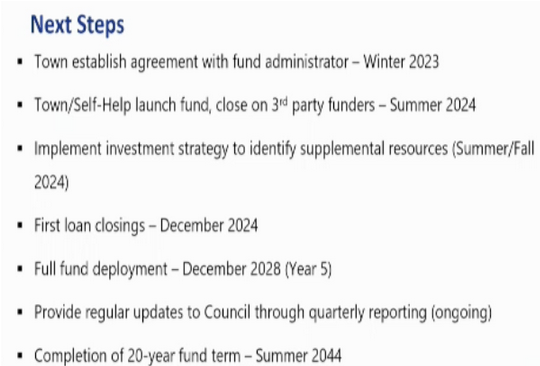
Council approved the Longfellow wet lab, which you may know from the Purple Bowl stories
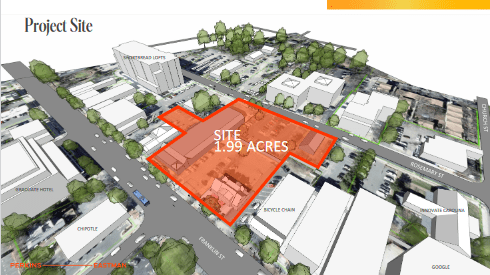
For decades, Chapel Hill’s business community and elected officials have been trying to diversify our downtown’s economy. While there is no shortage of interest in building housing downtown—more on that in a minute—there have been very few proposals to build office space. In September 2020, at the height of the pandemic, the Chapel Hill Town Council committed tens of millions of dollars of its debt capacity to building a downtown parking deck, which will be finished this spring, as part of a deal with Grubb Properties in which the company would build a ten-story, 238,000 square foot wet lab across the street. (Construction on this project is expected to start next year).
Last November, Longfellow Real Estate partners proposed building a second wet lab downtown. Wet labs are office space where one can perform experiments using “wet” and potentially hazardous chemicals. They are in high demand, in part because they’re needed by scientists who are hoping to commercialize their research. While most of the coverage of the wet lab focused on the businesses that would be displaced, including Purple Bowl (which found new digs) the project itself is massive, adding up to 380,000 square feet of office space, including retail, to the downtown. The project includes open space that will provide a new connection between Rosemary and Franklin streets and 165-foot, 11-story buildings. (Durham already has 700,000 square feet of wet lab space, and is expecting to add even more in the near future).
The Longfellow project was approved 7-1, with Adam Searing, who expressed skepticism about the demands for wet lab space, dissenting. (Council member Tai Huynh was absent from what would have been his final council meeting).
Council did not approve the proposed 12-story condo building on Rosemary
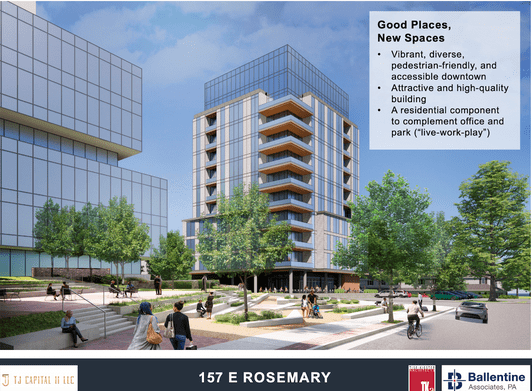
Council really didn’t like this one. Or, rather, they thought this building was just not right for this particular location. (“It’s not you, it’s me,” was the tenor of the commentary from council members who typically approve housing projects).
This project was audacious, as council member Paris Miller-Foushee noted last October when council first heard the proposal, when the building was just 11 stories. The developer chose not to back down and added an extra story to the 56-unit project, with a quarter of its for-sale units reserved for households making around $70,000 a year.
As Chase Pellegrini de Paur noted in his terrific write-up of the meeting for Indy Week, opposition to the project brought together two unlikely groups, the tabletop gamers who work at The Gathering Place, the business that would have been displaced had the project been approved, and the sorority members of PhiMu, whose house is adjacent to the property. While The Gathering Place was largely concerned about being displaced—and we think that the town should help successful businesses relocate—PhiMu’s concerns were more focused on the size of the building.
While it is rare for the council to reject housing proposals, the council’s 7-1 vote against this project—Camille Berry was the lone supporter—marks the third time in the last two years that the council has voted against building more housing downtown. This past spring, the council voted against the Aspen Heights project, which would have brought 112 homes to an almost two-acre site along Martin Luther King, Jr., Blvd, with council member Tai Huynh, who usually supports housing, voting against the project in a 5-4 vote. And in February 2022, the council essentially told a developer to go away after seeing a proposal for 200 homes on a 3.6 acre site that was also on MLK, Jr. Blvd. The one housing project that has been approved, 150 apartments at 101 E. Rosemary, was only approved after more than a year of negotiation.
One thing that became clear in this meeting is that the town’s Future Land Use Map (affectionately called the FLUM), passed in December 2020 by a town council that was under the sway of CHALT is not working. As our Mayor-elect Jess Anderson noted on Wednesday, it’s already outdated, particularly when it comes to its recommendations regarding building heights. It is no longer economically viable to build four- to six-story buildings on Rosemary Street, as the FLUM suggests, so our choice is between building nothing, which would suit the members of PhiMu and owners of multi-million dollar homes nearby just fine, or changing our land use rules to allow for greater housing density.
Changing our land use rules requires difficult conversations, particularly downtown, where we’ve effectively fenced off most of our land to anyone who’s not in Greek life or a millionaire. We hope that the next council takes our downtown housing needs seriously. With more than 500,000 square feet in office space coming on board soon, people will need places to live.
This post was written by Martin Johnson (Chapel Hill) and Melody Kramer (Carrboro.)

